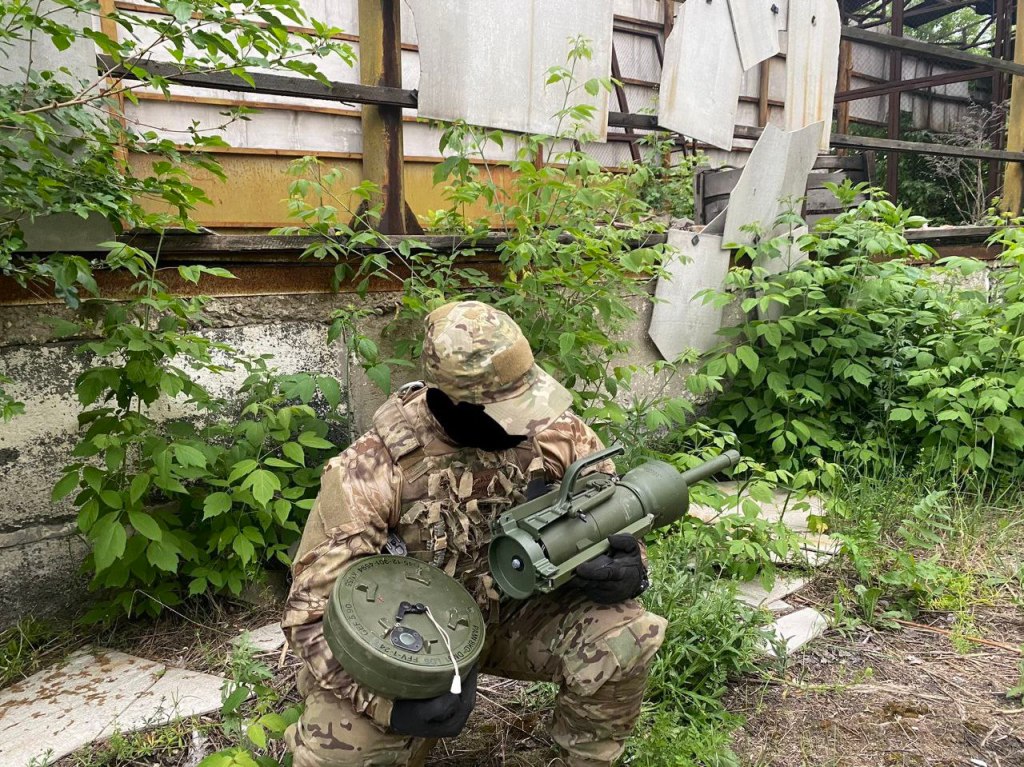While there has been much discussion of Germany’s transfer of RGW90 (Matador) anti-armour weapons, MANPADS and Gepard anti-air systems one weapon which has been overlooked is the DM-22 PARM.
The initial version of the mine, the DM12 PARM 1 or Panzerabwehrrichtmine was developed in the late 1980s and it entered Bundeswehr service in the early 1990s. An improved mine the DM22 PARM 2 entered production in the late 1990s. The weapons are directional anti-tank mines. These are sometimes described as off-route mines – a concept we have looked at before in our video on the British L14A1 off-route mine. The mines are deployed with a 40 meter long fiber optic trigger cable, which is laid over the area to be blocked. If there is contact with the cable, such as a vehicle driving over it, the directional mine is triggered. The mines can also be remote detonated.

The mine fires fin stabilised HEAT warhead which can accurately strike targets up 40 meters (for the DM12 PARM 1) and up to 100 meters away (for the DM22 PARM 2). Data on what the mine’s shaped charge can penetrate varies but it is capable of penetrating more than 100mm of rolled homogenous armour. The mine is made up of a warhead and a firing unit – these are mounted on a tripod which is manually sighted using a set of iron sights on the top of the mine.
Once aimed across the expected area of enemy movement the trigger cable can be deployed. The fibre optic cable can be replaced with a passive infrared sensor which extends the mine’s triggering range out to 60m. The DM22 PARM 2 is said to have a more complex sensor, an effective range of 100 metres and enhanced penetration.

Both mines are still in German service but only DM22s have been sighted on the ground in Ukraine so far. The first examples were photographed around the 25 April and the example was said to have been captured by Russian forces in the Izyum region. Since then further captured examples have been photographed during May 2022. The mines appear to have manufacture dates ranging from October 1997 to September 1998.

According to a Spiegel report, from 17 May, Germany transferred 1,600 DM-22 off-route anti-tank mines and 3,000 DM-31 conventional anti-tank mines. It is unclear if there are further shipments planned.
At this time there’s no data on if they’ve been used in the field and if they have how effective they’ve proven. The current nature of the fighting would certainly appear to suit the intended purpose of the mines for use denying axis of advance and ambushing enemy vehicles.
Update 2/06/2022:
Further images of the DM22 with Ukrainian forces have been shared.


Update 19/10/23:
Germany has delivered nearly 15,000 mines to Ukraine and plans to restart production of the DM22 to replenish Bundeswehr stocks.
If you enjoyed this video and article please consider supporting our work here. We have some great perks available for Patreon Supporters – including custom stickers and early access to videos! Thank you for your support!
Bibliography:
Report on German Transfers of Mines to Ukraine, Spiegel, (source)
Germany sent anti-tank grenade launchers and mines to Ukraine, Mil.In.UA, (source)
German Landmines – An Inventory, BITS, (source)

2 thoughts on “German DM22 Directional Anti-Tank Mines In Ukraine”